In sleepy North Cyprus Nicola Gill’s family explored fairytale castles, snorkelled off deserted beaches and spotted rare wildlife – all in a day.
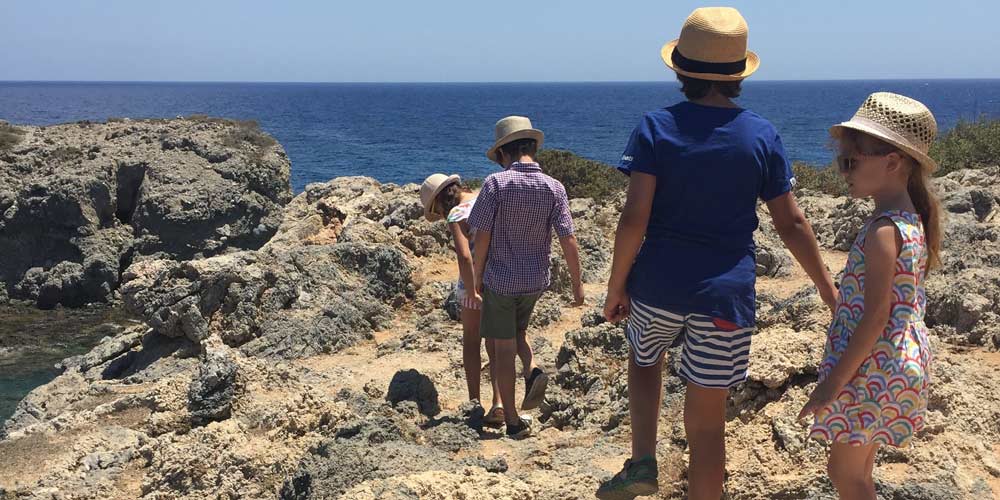
The kids at the very easternmost point of North Cyprus, Zafer Burnu
I’m no great believer in karmic coincidence, but after an hour driving through the stunning mountains of North Cyprus searching for a ruined castle on our first day we we are lost. Leafing through my guidebook to glean clues I come across a photo captioned ‘the North Cyprus chameleon – very rarely seen.’
At that moment, as we round another vertiginous bend, we spot something green in the middle of the road and jump out to investigate. Swivelling its eyes in an unsettlingly independent fashion, it is – incredibly – a chameleon.
Casually morphing from dark khaki to pale lime, my reptile-mad son Iggy, 9, is thrilled to see it. Chameleon safely up tree, we pile back into the car and continue our castle search, half expecting to find a unicorn around the next corner. When we do reach an empty, dusty little car park at the foot of Kantara castle (Arabic for ‘arch’) we’ve taken so long finding the place the ticket booth is shut. But as this is North Cyprus there’s no barriers or gates and the first flight of twisting stone steps winding up to the majestic, ruined castle towering dramatically above us is too tempting.
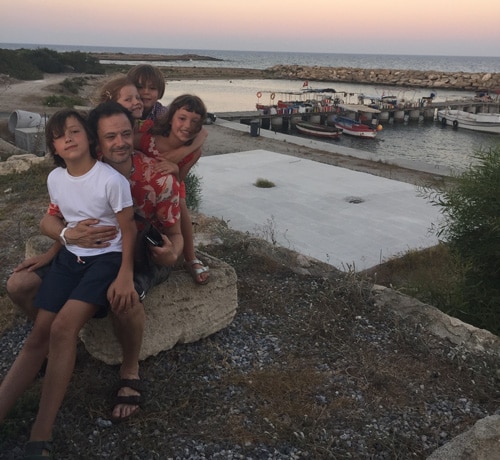
Outside Blue Sea restaurant, Karpaz peninsula
Half expecting a furious security guard to confront us we wend our way up, and within minutes are entranced, losing ourselves in magnificently intact high ceilinged rooms, peering out through archers’ slits in stone walls, and marvelling at the giant vistas from crumbled sections. By the time we get to the dizzyingly high summit, surrounded by wildflowers sprouting from tumble down turrets towers, buzzing bumble bees and wheeling swifts, we truly feel we are in a magical kingdom.
The children haven’t complained about a single step, and they’re intensely curious to learn about the history of the castle. Something about the wild setting and unfettered freedom to explore every nook and cranny of it makes it seem very real to them as a place people have lived in.
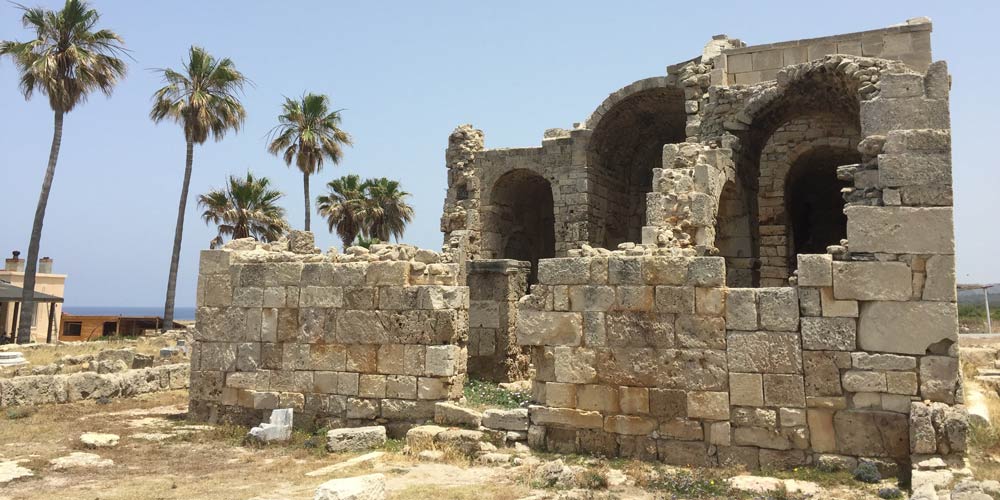
Ayfilon Beach, ruins above
As the sun sets we hurriedly pick our way back down unlit paths, previously innocuous shadows taking on a spooky air, the children scaring themselves senseless imagining lurking dragons or ghosts. North Cyprus is working its magic. The previous day we’d checked into the first of our two low-key, eco-friendly b&bs on the remote Karpaz peninsula – a finger of land sticking out on the north-eastern tip of the island, stretching toward near neighbour Syria. Technically, we are on Turkish soil.
But as no one other than Turkey recognises North Cyprus as such, getting here means either switching planes at a mainland Turkish airport, or flying direct to Larnaca in the south, then taking a taxi over the border before picking up a hire car in the North – it’s illegal to bring a Greek hire car over the border. Whether it’s this slightly awkward journey to reach North Cyprus, or simply the higher profile marketing of it’s southern neighbour, North Cyprus is virtually empty of foreign tourists.
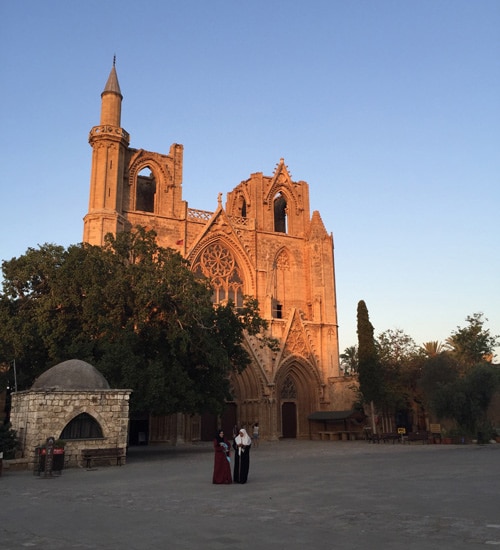
Gazimagusa
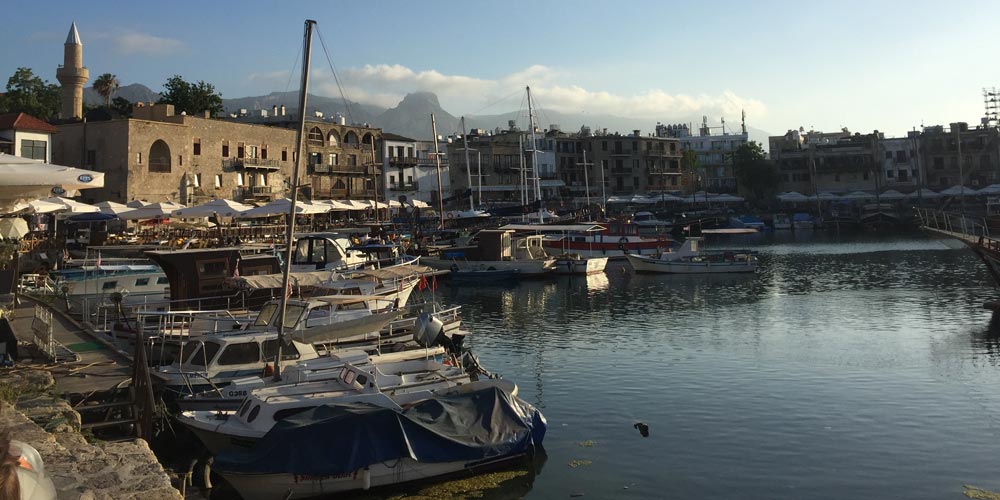
Kyrenia
Our guest house, Glaro Gardens, is tucked away down a windy road, halfway up the peninsula about five minutes drive from beautiful beaches. It’s a collection of modestly handsome, simply furnished, stone-built cottages, many interconnecting into six-bed units for families, facing each other around a lush garden of grass and gnarled olive trees, and patrolled by a splendid cockerel constantly marshalling his hen harem. Taking the night air on our veranda before turning in, Tallulah, 8, and Lola, 6, marvel at the spine-tingling screeches of barn owls and the vast starry canopy, before sleeping blissfully under crisp, white cotton sheets.
Up early, we fill up on a freshly made traditional Turkish Cypriot breakfast of olives, halloumi, tomatoes, egg and bread, with homemade honey, jams and sweetened tahini to follow made for us by Mr Yasar and his wife. North Cyprus in July is searingly hot, in the mid to high thirties most days, so we need to plan carefully. My partner Pete is keen to drive to Zafer Burnu, the uninhabited, extreme tip of the peninsula, where wild donkeys roam the rocky, deserted landscape in majestic zebra-like herds, and the rare Audouin’s Gull lives. As we drive east, we pass empty cove after cove, with creamy sand beaches and turquoise waters.
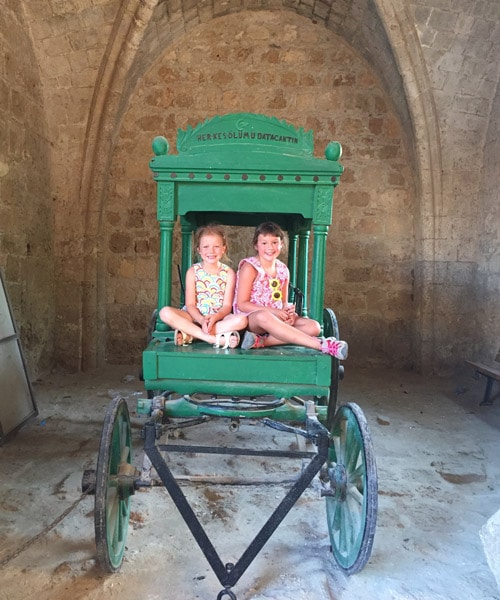
Gazimagusa
Abandoned, ancient Greek churches are dotted everywhere – the peninsula was largely Greek-inhabited before 1974 when the island was split into two – and a few Greeks, detectable by their blue eyes, still hang on here. The donkeys may be wild but they’ve learned a trick or two and emerge from the bushes when they hear our car, stubbornly positioning themselves broadside across the tarmac, gently shoving their soft noses inside as soon as we put the windows down, greedily snaffling the roasted sunflower seeds offered by the amazed children.
The tarmac road ends 5km from the tip and we slowly bump on, over the narrow rocky unmade track, fringed with wildflowers, aromatic shrubs, and swooping giant carmine dragonflies, birds of prey wheeling overhead. Suddenly the track opens up and we are there, surrounded by sea ahead and on both sides. Harrison, 7, and Tallulah want to climb to the furthest, perilous rocky outcrop, but a swim in one of those tempting coves is definitely in order and we drive back the 40 minutes or so to Ayfilon Beach on the north coast.
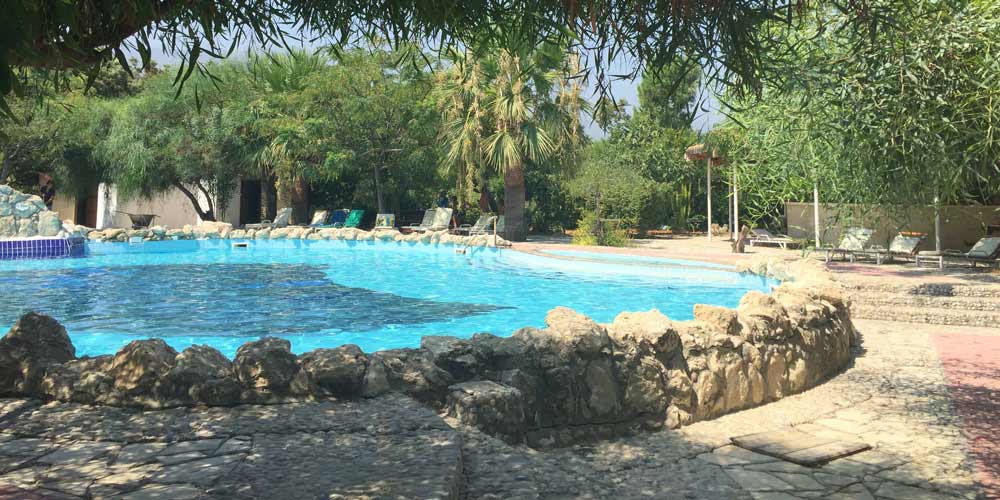
Natural pool at Riviera Beach Bungalows
Here, charming owner Diatkor (chk) has built several eco lodges overlooking a pristine crescent beach on a spot shared with the ancient, well-preserved ruined of Ayios Philon church. This was the site of the ancient city of Karpasia, founded by the King Pygmalion of Cyprus. There’s some faded but intriguing mosaic floor remaining, and several large starred agama lizards, like mini iguanas, sunbathing picturesquely on the stones.
Below, the sea sparkles, and the kids race down the steps to the beach, stripping off in seconds and hurtling into the warm sea. Swimming out further we realise more submerged ruins of the city are visible beneath our feet in the crystal clear water, and once again, the casual abundance of North Cyprus’s intense history, changing hands dozen of times throughout history as a strategic stepping stone between East and West, is highlighted in a spectacular way. It’s only 224km long and 96km wide but sandwiched between Turkey, Syria, Egypt and the Greek islands it’s stuffed with romantic ruins from just about every era and empire imaginable, all with minute entrance fees and excellent information.
Best of all for families there’s barely any restrictions on roaming around them which means children can really get stuck in and let their imaginations run riot. That evening we have dinner at the Blue Sea restaurant, set in an idyllic spot on the south of the peninsula, part of an old converted Carob processing plant on a tiny fishing harbour.
The children play at spotting swooping bats and passing owls while picking pomegranates outside as we savour a local Efes beer before our Meze feast arrives. The next few days are filled with visiting more astonishing ruins (and equally stunning beaches) on the East side of the island, including the unmisseable ancient city of Salamis, and strolling around the living museum of Gazamagusa, a thriving old city in which Leonardo da Vinci is said to have had a hand designing the impressive walls. Before heading to our next accommodation on the other side of the country though, we had one more wildlife wonder to experience. Mr Salahi, from the North Cyprus Turtle Project, was our guide.
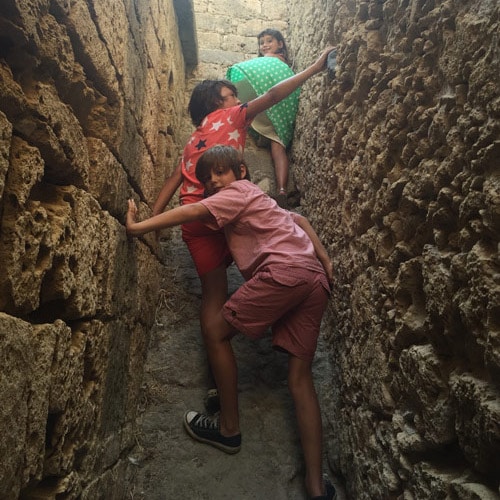
Kyrenia castle
Following him on the short drive to beach HQ we arrived at a simple shack with volunteers and a bucketful of wriggling baby turtle hatchlings needing to be released that night. The children marvel at being allowed to hold the perfect day-old miniature turtles and after a fifteen minute walk to the shoreline proudly help the freed stragglers heading in the wrong direction to get into the surf and out to sea. Going home, late, but very hungry, we spot a sign saying ‘pizza’ outside an unassuming café in the centre of Dipkarpaz, the biggest town on the peninsula.
Normally we’d eat local food but this counts as an emergency so we mime to the Turkish-speaking owner that we’d like to order enough for six. Fifteen minutes we later we discover ‘pizza’ is the most delicious Turkish pizza! With minced lamb, fried onion and delicate spices on flat bread, we decide it’s our new favourite food.
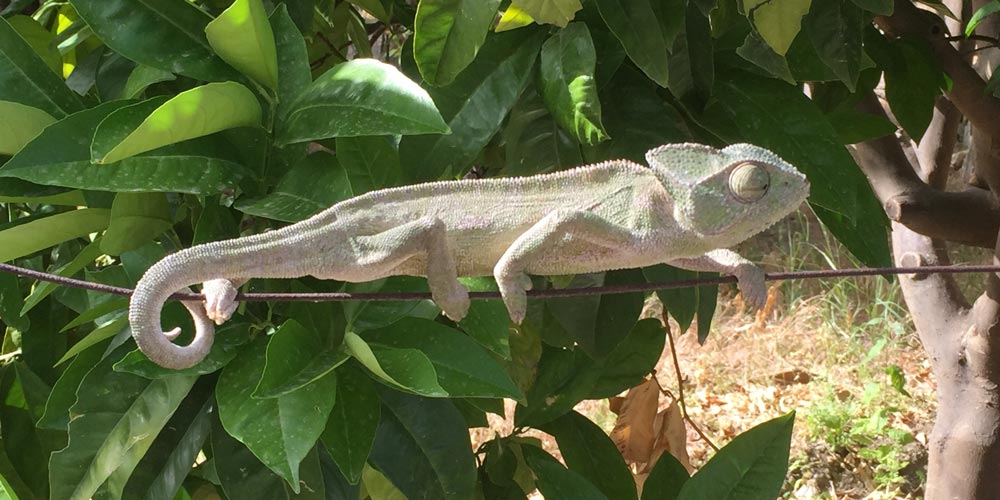
Chameleon!
The next day we make the two hour drive to Riviera Beach Bungalows, near yet another history-stuffed city, Kyrenia. We can’t resist taking the scenic route through the mountains, stopping at the highest of the island’s three crusader castles, Buffavento, perched so high we can see the whole of North Cyprus spread out below us, and also the carefully concealed church (and monks’ hiding place) of Antiphonitus where rare 12th century frescoes are beautifully preserved.
Despite being on the busier side of the island Riviera itself is a world away from the relatively small strip tourist trap hotels nearby. A peaceful idyll down a tiny road leading to the sea, and consisting of a handful of one or two story wooden houses, owners Altay and Osman Bey have lovingly created lush gardens, a wonderful natural-look swimming pool and jetties for snorkelling. It’s a hard place to leave and after so much sight seeing in the first few days is the perfect place to chill out and let the children spend hours on end alternating between the pool and the sea.
We do manage an evening trip to Kyrenia city to take in the legendary view of the old buildings lining the harbour (mostly delicious seafood restaurants now) with the mountains looming mightily behind and the sea stretching toward Greece in front. So strategically vital was this spot the vast Kyrenia castle was built here and despite all the history they’ve seen the children are keen to visit and we can’t drag them away from exploring the turrets, passageways, dungeons and torture rooms, plus the fantastic shipwreck museum attached.
On our last day we can’t resist a bit of contemporary fun and head to the brand new luxury Elexus hotel a short drive away to check out their enormous water park. It’s a shock to our systems to be surrounded by so many people and so much newness after immersing ourselves in the history of the island and staying in low-key eco resorts but it’s undeniably good fun. We know North Cyprus has really got under the children’s skin though when eight-year-old Tallulah says ruminatively over her octopus stew at dinner (yes, they ate octopus!) ‘the water park was fun but the castles and ruins were funner.’
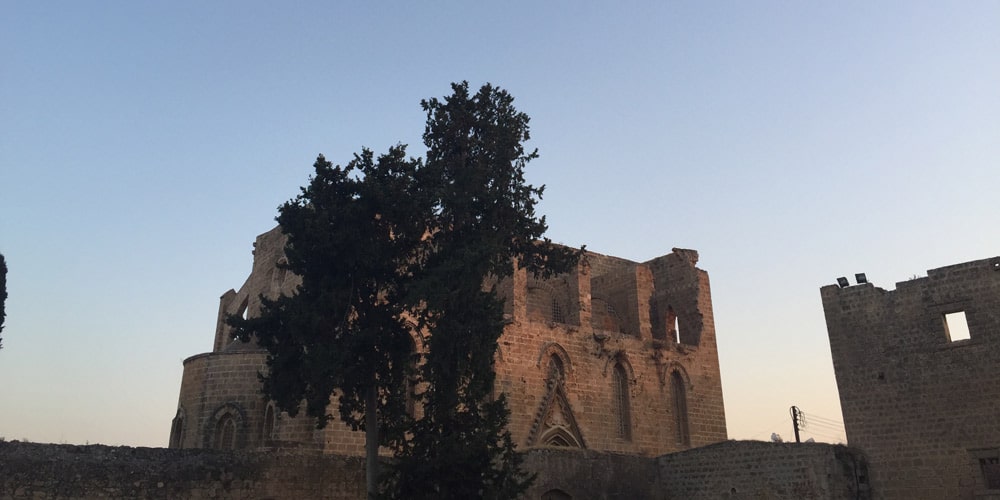
Gazimagusa
How to get there
You can reach northern Cyprus’ Ercan airport via a touchdown or change of plane in a Turkish mainland airport (usually Istanbul) or by flying direct to Larnaka, Republic of Cyprus (the Greek side) and taking a taxi over the border. Hire cars from the south aren’t insured for the North so you’ll need to hire on the Turkish side if you fly to Larnaca.
Total travel time is 7.5 hours to Ercan and slightly less to Larnaca, but the steep cost of a taxi (around £80 each way at least) means most people go via a brief stop on the Turkish mainland. Atlas Jet fly daily from London, Birmingham, Edinburgh and Manchester. Prices start at around £75 one way including taxes.
Who to book with
Vivid Cyprus specializes in activity based holidays, and offers accommodation from five star hotels to family run B&Bs including guesthouses in Karpaz Peninsula. They can organize package tours based around walking, cycling, nature, history, horse riding and more.
Trips can be tailored to meet your needs or you can simply book a flight, accommodation and hire car through them. Prices vary from £65 for a three person villa in low season at Glaro Gardens on the Karpaz Peninsula to £300 for a family room at the newly built 5* Elexus Hotel near Kyrenia.